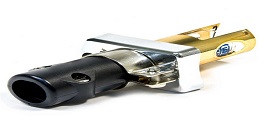Heating technology in 43 keywords
Please choose a letter:
Condensed Water
If the flue gas cools below a certain temperature threshold, the water vapour contained within it turns to condensed water. The energy produced in this conversion – the condensation heat – can be used.
Combustion Manager
Support for the combustion process using modern microprocessor equipment. There are many additional advantages for the user. Service engineers can also carry out their work more purposefully and more quickly (digital burner technology).
Convection
Transfer of energy through a moving medium (air, water, combustion gases).This term is very often used in conjunction with radiators. The air in the room moves along the warm surface of the radiator. Heat energy is transferred due to this movement.
Circulating Pumps
Electrical water pumps, which pump the heating water to radiators or floor heaters.
Carbon Dioxide
Carbon dioxide is a gas which is produced when materials containing carbon are burned. Geoclimatic changes occur due to the increase of carbon dioxide in the earth's atmosphere. The increase in the earth's temperature is also called the greenhouse effect. Carbon dioxide can be reduced by reducing the fuel consumed.
Combustion Air
Combustion air contains 21 percent oxygen, which is needed for any combustion. In addition, 78 percent nitrogen is incorporated into the air. About 10 cubic meters of combustion air are required for the complete combustion of 1 cubic meter of gas or 1 litre of heating oil.
Carbon monoxide
Poisonous gas, which is produced when materials containing carbon are burned. Output is virtually eliminated by correct burner adjustment.
Condensing system
Condensing boilers represent the peak of technology for private dwellings – high energy utilisation and low polluting emissions; in spite of this, purchase costs are moderateand the technology is well proven. Condensing boilers adjust their heat output, depending on the heat required, as a function of the outside temperature, and also make use of the heat of the waste gas, which, in other systems, is lost through the flue. In doing so, water condenses in the condensing boiler. The integral heat exchange materials are therefore corrosion-resistant. The efficiency of such condensing systems has practically reached the theoretical maximum, and optimum use is made of the fuel.
Condensation heat
Additional heat from the flue gas. When the flue gas cools, condensation occurs, as a result of which the additional energy is released. With natural gas, the additional potential – referred to the calorific value – is about 11 percent, with liquefied gas around 9 percent, and with heating oil 7 percent.
Combustion gases
Products resulting from the burning of fuel and combustion air. In the main, carbon dioxide (CO2) and water vapour are produced.





-268x134.jpg)
